Immersive VR Experience: Transforming Education, Entertainment, and the Future of Immersive Technology
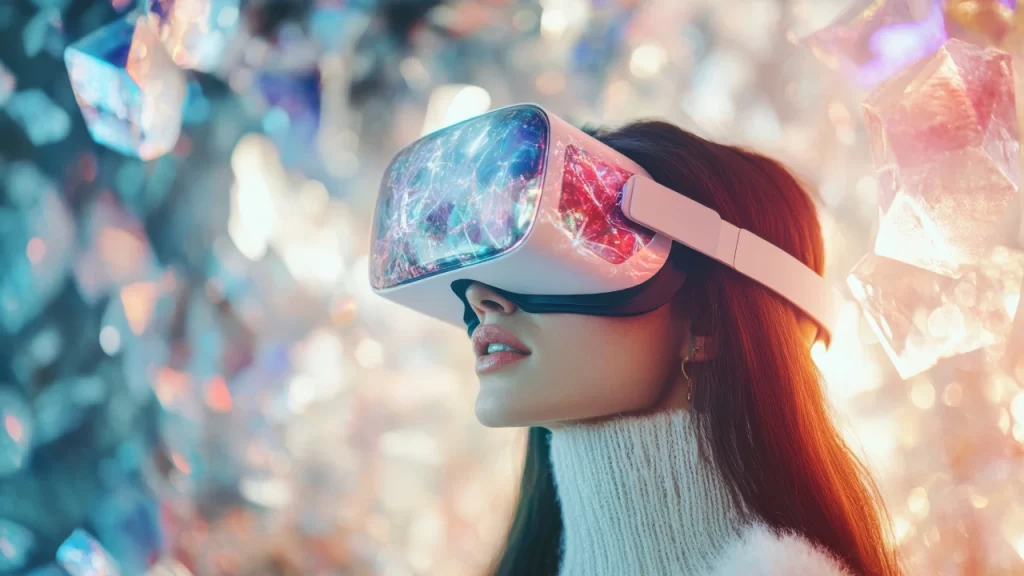
Virtual Reality (VR) is no longer confined to science fiction. It has become a transformative technology reshaping how we learn, entertain, and interact with the digital world. At the heart of this revolution is the Immersive VR Experience, a technology designed to create deeply engaging and realistic virtual environments. From education to entertainment, and even healthcare, immersive VR is paving the way for innovation and efficiency. This article explores the potential, applications, and challenges of immersive VR, focusing on its real-world impact and future trends.
1. Introduction to Immersive VR Experience
1.1 What is Immersive VR Experience?
The Immersive VR Experience allows users to interact with computer-generated environments in a way that feels real. It combines visual, auditory, and sometimes even tactile feedback to create a virtual world where users can fully immerse themselves. Unlike traditional screens, VR eliminates distractions and transports users into a different reality.
1.2 How Immersive VR is Different from Traditional Technology
While traditional screens and augmented reality (AR) provide limited interaction, Immersive VR creates a fully enclosed experience. Moreover, users are no longer just observers; instead, they become active participants in these virtual spaces. This has made VR a game-changer in industries ranging from gaming to healthcare.
Example:
In a VR flight simulator, pilots-in-training can practice complex flight maneuvers in a risk-free virtual environment, building confidence and skills without endangering lives.
2. The Role of Immersive VR in Education and Learning
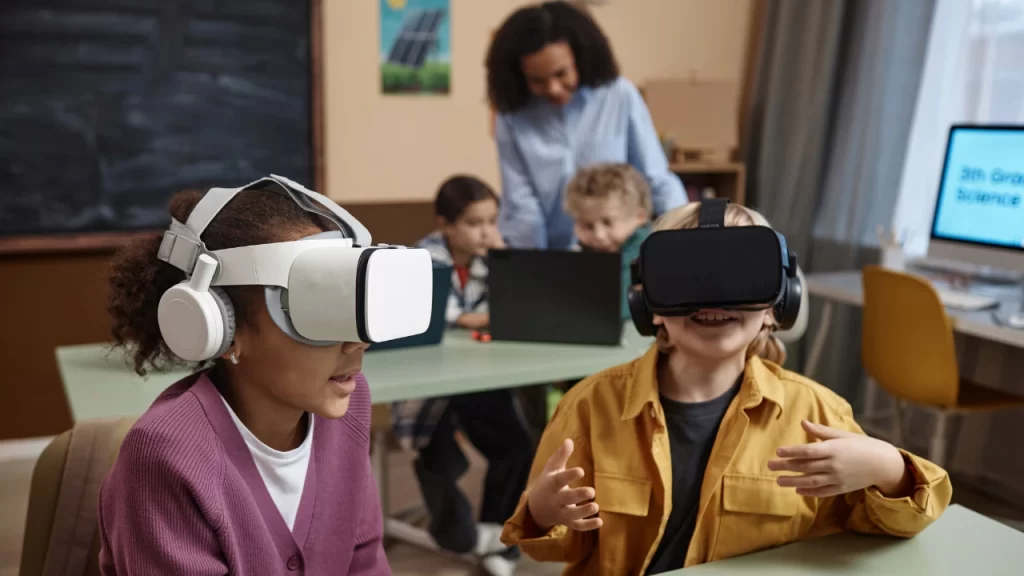
2.1 Enhancing Classroom Learning with Immersive VR
Immersive VR has redefined traditional classroom experiences by offering interactive simulations and hands-on virtual lessons. Moreover, VR makes learning exciting by letting students explore space or examine a virtual frog, offering experiences textbooks can’t provide.
2.2 Remote Learning and Global Accessibility
Through VR platforms, students from different parts of the world can attend virtual classrooms and participate in group activities. This technology breaks down geographical barriers and makes quality education more accessible.
Example:
In a biology class, students can wear VR headsets to explore the inside of a human heart, observing its functioning in real-time, which wouldn’t be possible with physical models alone.
3. Immersive VR in the Entertainment Industry: A New Era
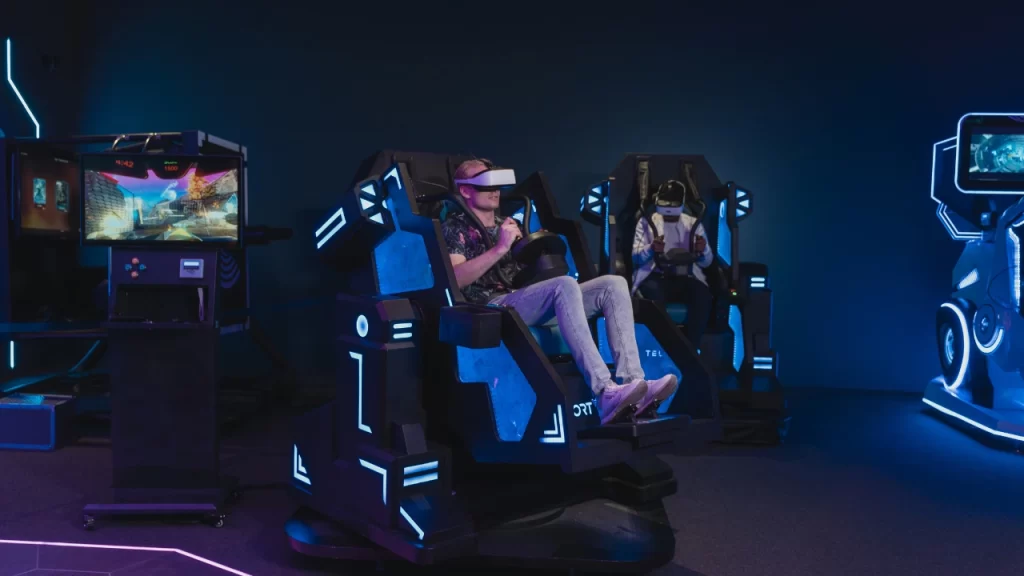
3.1 Gaming and Virtual Adventures
Gaming has been revolutionized by VR. Players are no longer limited to controllers and screens but can physically move, interact, and experience the game world. This enhances both the thrill and realism of gaming.
3.2 Cinematic VR Experiences
VR has introduced new dimensions to movies and live events. Audiences can now step inside their favorite movie scenes or attend live concerts virtually with friends from around the world.
Example:
Popular VR game titles like ‘Beat Saber’ and ‘Half-Life: Alyx’ allow players to physically engage with virtual environments, enhancing immersion and fun.
4. Future of Immersive VR Experience: Innovations and Trends
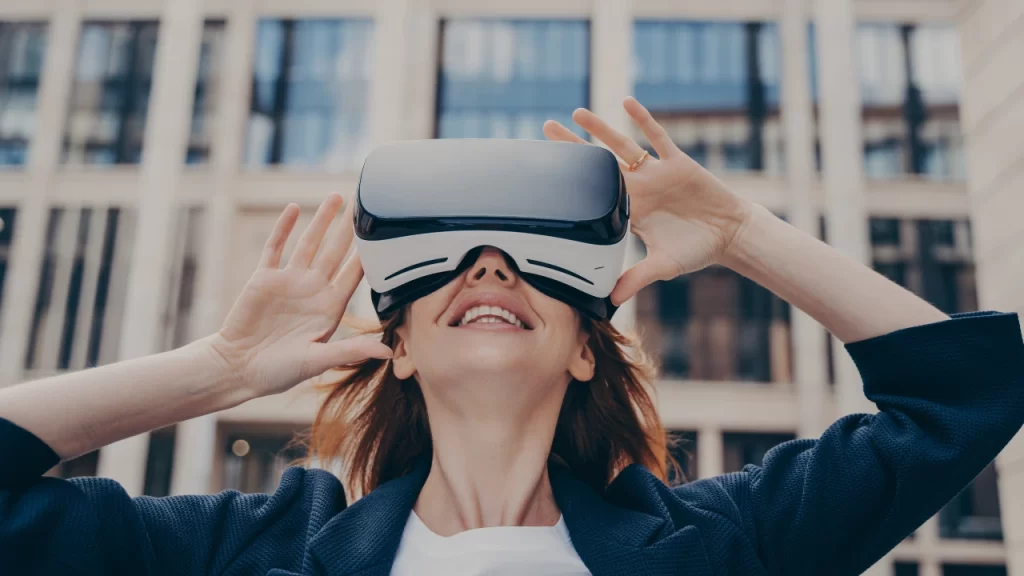
4.1 AI Integration in Immersive VR
The combination of Artificial Intelligence (AI) and VR is set to create smarter, more responsive virtual worlds. AI algorithms can adapt virtual experiences in real time, enhancing personalization and immersion.
4.2 VR Beyond Gaming and Education
Industries such as healthcare, architecture, and retail are exploring VR applications. From performing surgeries to creating virtual store walkthroughs, the possibilities are endless.
Example:
Surgeons can now use VR simulations to practice complex surgeries, reducing the risk of errors during real-life operations.
5. Challenges and Ethical Considerations in Immersive VR

5.1 Privacy and Data Security Concerns
As VR collects vast amounts of user data, privacy becomes a significant concern. Safeguarding personal information and preventing misuse is crucial for maintaining user trust.
5.2 Motion Sickness and Accessibility Issues
Many users experience discomfort or motion sickness when using VR for extended periods. Designing VR hardware and software to minimise these issues remains a critical challenge.
Example:
Some VR experiences, like roller coaster simulations, trigger nausea in users who are sensitive to motion sickness. Companies are now working on stabilizing VR visuals to address this.
6. Conclusion: The Endless Possibilities of Immersive VR Experience
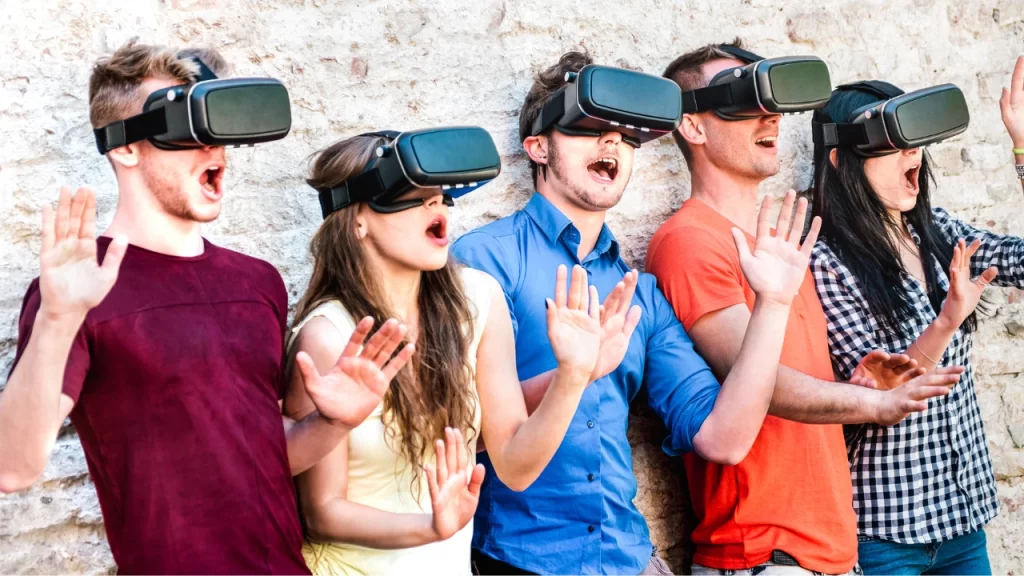
6.1 The Future Landscape of Immersive VR
As hardware becomes more affordable and software more sophisticated, VR will continue to expand its reach. Industries across the spectrum will adopt VR to enhance efficiency and engagement.
6.2 Why Immersive VR is Here to Stay
The potential applications of immersive VR are vast, from transforming education and healthcare to revolutionising the entertainment industry. Businesses and individuals alike must prepare for a future dominated by immersive experiences.
Example:
Tech giants like Meta and Microsoft are investing heavily in VR platforms, signaling that immersive VR will play a central role in the future of digital interaction.
Frequently Asked Questions (FAQs) About Immersive VR Experience
1. What is an Immersive VR Experience?
An Immersive VR Experience refers to a virtual environment where users can interact with computer-generated simulations in a highly engaging and lifelike manner. It uses VR headsets, spatial audio, and motion tracking to create a fully immersive digital world.
2. How is Immersive VR Different from Traditional VR?
While traditional VR offers limited interaction, Immersive VR provides a deeper level of engagement with responsive environments, tactile feedback, and real-time interaction, making users active participants rather than passive viewers.
3. What are the Benefits of Immersive VR in Education?
Immersive VR enhances learning by offering interactive, real-world simulations. Students can explore historical sites, perform virtual science experiments, and engage in hands-on activities that improve retention and understanding.
4. How is Immersive VR Used in the Entertainment Industry?
In entertainment, Immersive VR allows users to step into virtual gaming worlds, attend virtual concerts, or experience movies in a fully interactive and 360-degree environment.
5. Is Immersive VR Technology Expensive?
While VR hardware and software were initially expensive, costs have been steadily decreasing, making it more accessible for businesses, schools, and even personal use.
6. Can Immersive VR Be Used in Healthcare?
Yes! Immersive VR is used for surgery training, pain management, therapy, and patient education. It allows medical professionals to practice procedures in a risk-free virtual environment.
7. What Are the Challenges of Using Immersive VR?
Common challenges include motion sickness, high hardware costs, privacy concerns, and accessibility issues. These barriers are gradually being addressed through technological advancements.
8. How Does Immersive VR Improve Remote Learning?
Immersive VR bridges the gap in remote learning by offering virtual classrooms, interactive lessons, and collaborative projects, enabling global access to high-quality education.
9. Can Immersive VR Be Used for Corporate Training?
Absolutely! Many companies are adopting VR for employee training programs, especially in high-risk industries like construction, manufacturing, and healthcare.
10. What Industries Benefit the Most from Immersive VR?
Key industries include education, healthcare, gaming, entertainment, real estate, architecture, tourism, and retail, where Immersive VR is creating innovative solutions.
11. Are There Ethical Concerns with Immersive VR?
Yes. Issues like data privacy, digital addiction, and creating safe virtual spaces are ongoing concerns in the VR industry.
12. Can Immersive VR Replace Traditional Classrooms?
While it can’t entirely replace physical classrooms, Immersive VR serves as an excellent supplement to traditional teaching methods, making complex subjects easier to understand.
13. What Are Some Popular Immersive VR Devices?
Popular devices include Oculus Rift, HTC Vive, PlayStation VR, and Meta Quest headsets, each offering advanced immersive experiences.
14. How Is AI Integrated with Immersive VR?
AI enhances VR experiences by making virtual worlds smarter and more adaptive, improving personalization and interaction quality.
15. Are There Any Health Risks with Immersive VR?
Prolonged use of VR can cause motion sickness, eye strain, and discomfort. Experts recommend taking regular breaks during extended sessions.
16. Is Immersive VR Suitable for Children?
While VR can be educational for children, it’s important to monitor screen time and ensure age-appropriate content.
17. Can Immersive VR Be Used in Real Estate?
Yes, real estate agents use VR to offer virtual property tours, helping clients visualize homes without physically visiting them.
18. What is the Future of Immersive VR?
The future of VR includes AI integration, improved hardware, affordable devices, and broader applications across multiple industries.
19. Are There Free Immersive VR Experiences Available?
Some platforms and apps offer free VR experiences, though premium content often provides higher-quality simulations.
20. How Can Businesses Adopt Immersive VR?
Businesses can integrate VR for product design, employee training, marketing campaigns, and creating interactive customer experiences.
References:
- Smith, J. (2023). “The Role of VR in Modern Education.” Journal of Immersive Technology.
- Brown, A. (2023). “Virtual Reality in Healthcare: Applications and Challenges.” Healthcare Innovations Review.
- Miller, R. (2024). “Trends in Immersive VR Technology.” Tech Today Journal.
